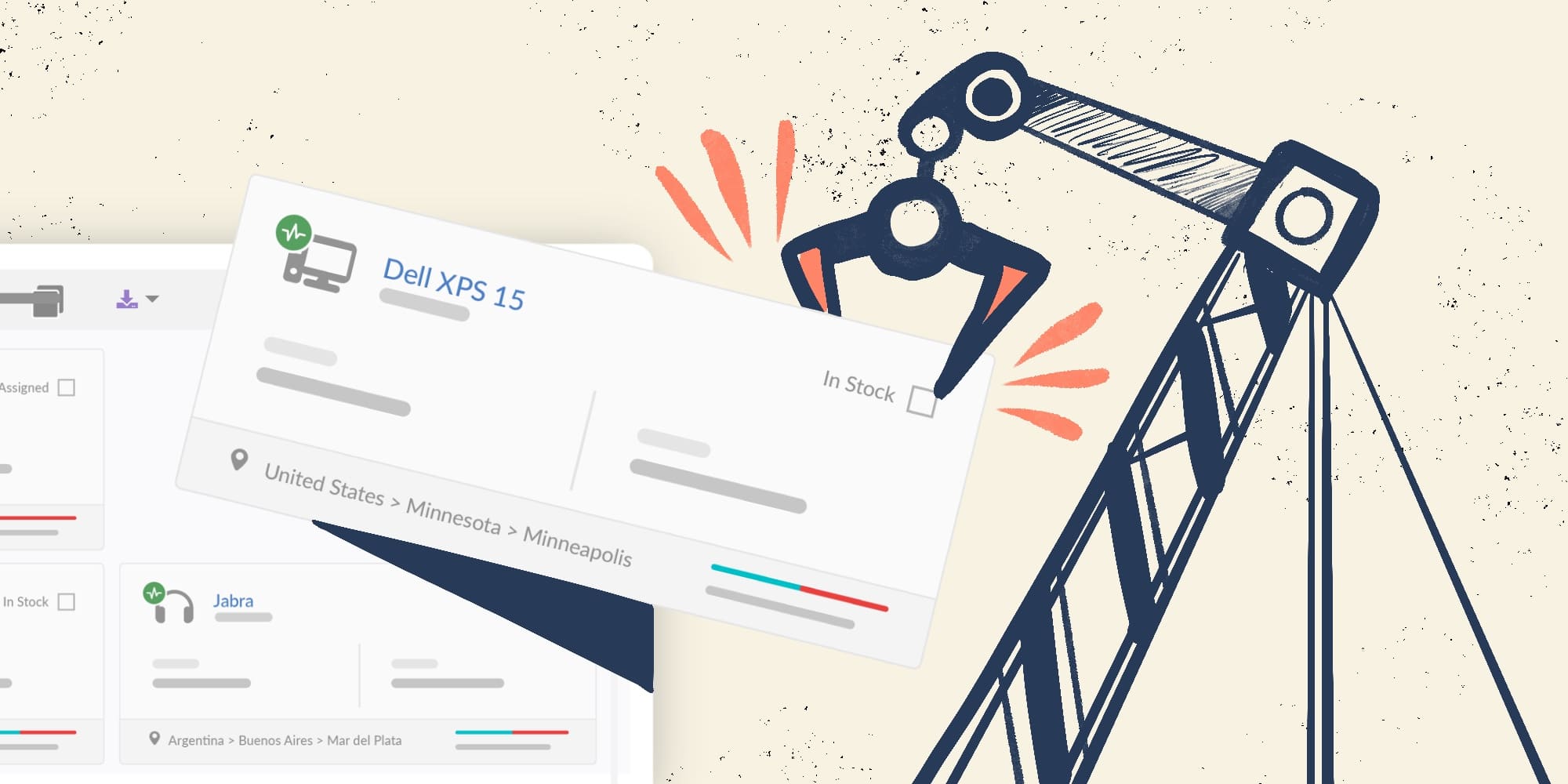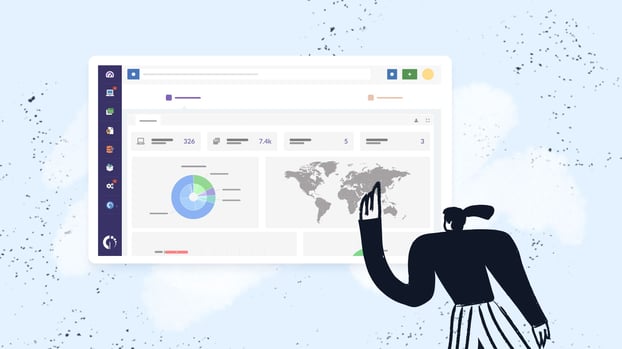Managing IT equipment goes beyond purchasing and maintaining it. Calculating the depreciation of assets — that is, how they lose value over time — supports a much more strategic approach to IT Asset Management (ITAM), particularly for teams handling a vast hardware inventory.
However, computing the depreciation of equipment manually is both time-consuming and prone to errors. Here, automated solutions are a game changer.
In this article, we’ll explore the concept of asset depreciation, why calculating it for IT equipment is essential, and how InvGate Asset Management can automate the process to improve accuracy and save time.
We’ll guide you through the step-by-step process for automating depreciation calculations and ensuring you get the most out of your IT budgeting efforts.
Let’s begin!
What is asset depreciation?
In a nutshell, asset depreciation is the gradual reduction in the value of a physical asset over its useful life. Understanding the depreciation of equipment— especially IT hardware — is essential for companies to maintain accurate financial records, comply with tax regulations, and plan future budgets.
Depreciation affects everything from computers and servers to printers and network equipment, making it an essential part of Hardware Asset Management
As these items are used over time, their value diminishes. In accounting terms, depreciation allows businesses to spread the cost of an asset over its useful life, matching the expense with the revenue the asset generates.
Methods to calculate depreciation
You can calculate depreciation using different methods, including:
- Straight-line depreciation:
This is the most straightforward and widely used method. It assumes that an asset will lose its value evenly over its useful life.
Example: A company purchases a server for $10,000. They expect to use it for 5 years and estimate that it will be worth $1,000 at the end. Each year, the server loses $1,800 in value. After 5 years, the server will be fully depreciated.
- Declining balance method:
This method accelerates depreciation, meaning that an asset loses more value in the earlier years of its life. It reflects the idea that many assets lose value more quickly when they are new.
Example: An organization buys a set of laptops for $15,000 with a depreciation rate of 40%. In the first year, the laptops lose $6,000 in value. In the second year, they lose $3,600. This pattern continues, with the laptops losing more value in the earlier years compared to later years.
- Units of production method:
This method ties depreciation to the asset's actual usage or production levels rather than just time. It’s particularly useful for assets whose wear and tear is more closely related to how much they are used.
Example: A company acquires a network printer for $5,000 and expects it to print 100,000 pages over its lifetime. If the printer produces 20,000 pages in the first year, it loses $1,000 in value that year. If it prints 30,000 pages in the second year, it loses $1,500 in value based on its usage.
Each method has its own applications and benefits, and choosing the right one depends on the type of asset and the company’s financial goals.

6 benefits of calculating IT equipment depreciation
From financial gains to compliance, computing the depreciation value of your IT equipment has multiple advantages.
Let’s break down the key benefits:
1. Accurate financial reporting
IT equipment makes up a significant portion of a company’s assets. Calculating depreciation ensures that the company’s balance sheet reflects the current value of those assets, which is crucial for performing more efficient IT Financial Management.
When you record depreciation accurately, financial reports show a true picture of asset value, expenses, and profitability over time.
2. Better budget planning
Knowing how much an asset will depreciate helps organizations more effectively plan for replacements or upgrades. This insight also helps allocate the IT budget for future purchases and prevents unexpected expenditures.
Depreciation forecasts allow IT departments to plan ahead for large capital investments, avoiding disruptions in operations caused by outdated equipment.
3. Tax benefits
Many tax authorities allow businesses to deduct depreciation as an expense, reducing taxable income. Accurately tracking IT equipment depreciation can result in significant tax savings, and automation ensures that deductions are applied correctly without manual calculations.
4. Improved Lifecycle Management
IT equipment often follows a predictable lifecycle—from acquisition to eventual replacement. Calculating depreciation helps track where assets are in their lifecycle.
Depreciation data can influence whether to repair or replace equipment, helping to make informed decisions that align with business goals.
Furthermore, knowing when assets are nearing the end of their useful life ensures that you can replace or upgrade them before they become liabilities, minimizing downtime and maximizing productivity.
How to compute depreciation of equipment automatically with InvGate Asset Management
Now that we’ve seen how this practice can thoroughly improve your ITAM efforts, it’s time to learn how to automate it.
For this, InvGate Asset Management offers an efficient way to compute depreciation automatically by calculating it in real time based on customizable rules. Then, you can set up alerts to notify you when an asset's value hits a specific threshold so you can take action.
Let’s see how it’s done.
1. Log in and access the depreciation settings
To start the process, you need to log in to InvGate Asset Management with an Administrator account. This ensures you have access to the system's full features and settings.
Once you are inside the system, go to Settings > Assets > Depreciation to access the configuration panel where depreciation rules are created and managed.

2. Create a new depreciation rule
InvGate Asset Management allows you to set up customized rules that will automatically calculate the depreciation of assets, such as IT equipment.
To begin, access the depreciation settings and add a new rule. You can tailor it based on the following factors:
- Asset type and manufacturer: Specify the type of asset (e.g., computers, servers) and optionally narrow it down to a specific manufacturer. This flexibility ensures that assets with different lifecycles are accurately tracked.
- Depreciation method: The straight-line method, which evenly spreads depreciation over the asset's useful life, is the default option and is ideal for simple, predictable tracking.
- Depreciation period: Decide when depreciation will start, whether from the year or month of acquisition or disposal. Most companies opt to begin depreciation at acquisition, which can be adjusted based on your needs.
- Asset's useful life: Set the expected lifespan for the asset. For example, computers might be set to five years, reflecting typical replacement cycles.
- Overwrite current information: Enabling this option will overwrite the current asset value with the new depreciation rule. This is especially useful when updating depreciation for an existing asset inventory.
Note that, in order to calculate its current price, the asset must have set the acquisition price, acquisition date, and residual value.
Once configured, InvGate automatically applies the rules, updating depreciation values in real time. You can also reorder rules to ensure they’re applied in the right sequence, making the process even more adaptable.
Keep in mind that if you are adding new assets or bulk editing existing ones, the depreciation calculation will be performed during the next scheduled task (which runs every hour). This way, the system always calculates up-to-date depreciation values.

3. Automating alerts for asset depreciation
Finally, InvGate Asset Management allows you to automatically send alerts when specific conditions are met. This is key to act upon depreciation timely.
For instance, you can configure an alert to notify you when an asset’s value drops below a certain threshold — say, 50% of its original purchase price. This way you can ensure that you’re aware of assets that may need to be replaced soon.
Let’s see how to set up an email alert for this scenario:
- Go to Settings > Assets > Automations and click on the option to create a new rule.
- Name the automation and provide a brief description to clarify its purpose. For example, you might call it "Depreciation Alert – Asset Value Below 50%".
- Select the event trigger "Asset Current Price updated." This ensures that the rule will activate whenever the depreciation calculation updates an asset's current price.
- Configure the action rule so that when the asset’s current price is less than or equal to 50% of its original purchase price, an action will occur.
- Choose the "Send email" action to have the system send a notification whenever this condition is met. This email can be sent to the finance team or asset managers so they’re aware that specific assets are approaching their end-of-life or will soon need to be replaced.
These automation tools add a layer of efficiency to the system, allowing IT departments and finance teams to stay informed about assets' depreciation status in real-time.

Conclusion
Calculating depreciation for IT equipment is a vital part of maintaining accurate financial records and planning for the future. Automating this process saves time and increases accuracy, making it easier for IT and finance teams to work together efficiently.
InvGate Asset Management streamlines the depreciation process with several key features:
- Real-time calculations ensure you always have the most accurate asset values.
- Custom rules allow flexibility based on asset type and manufacturer.
- Automation removes manual tracking, reducing errors and saving time.
- Integration with financial systems keeps data consistent across platforms.
- Reports are audit-ready, simplifying financial reviews.
- Budgeting and tax support help forecast expenses and simplify tax filings.
InvGate Asset Management’s real-time depreciation calculation feature provides a flexible, customizable way to manage depreciation automatically. And the best part is that you can check it out right away with our 30-day free trial!















